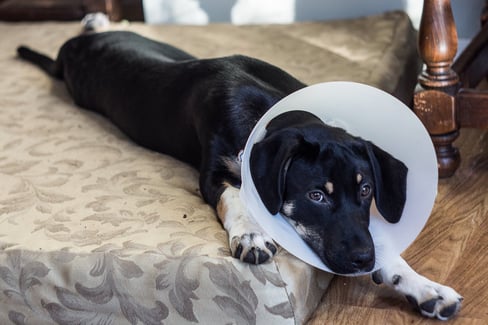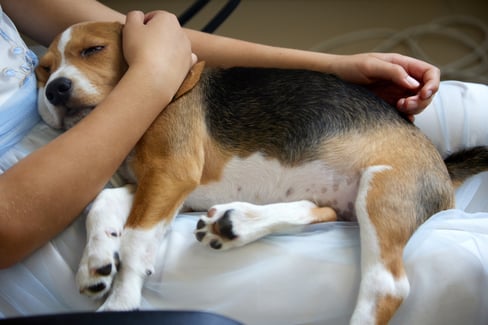Table of Contents
Small Dog Spay Recovery
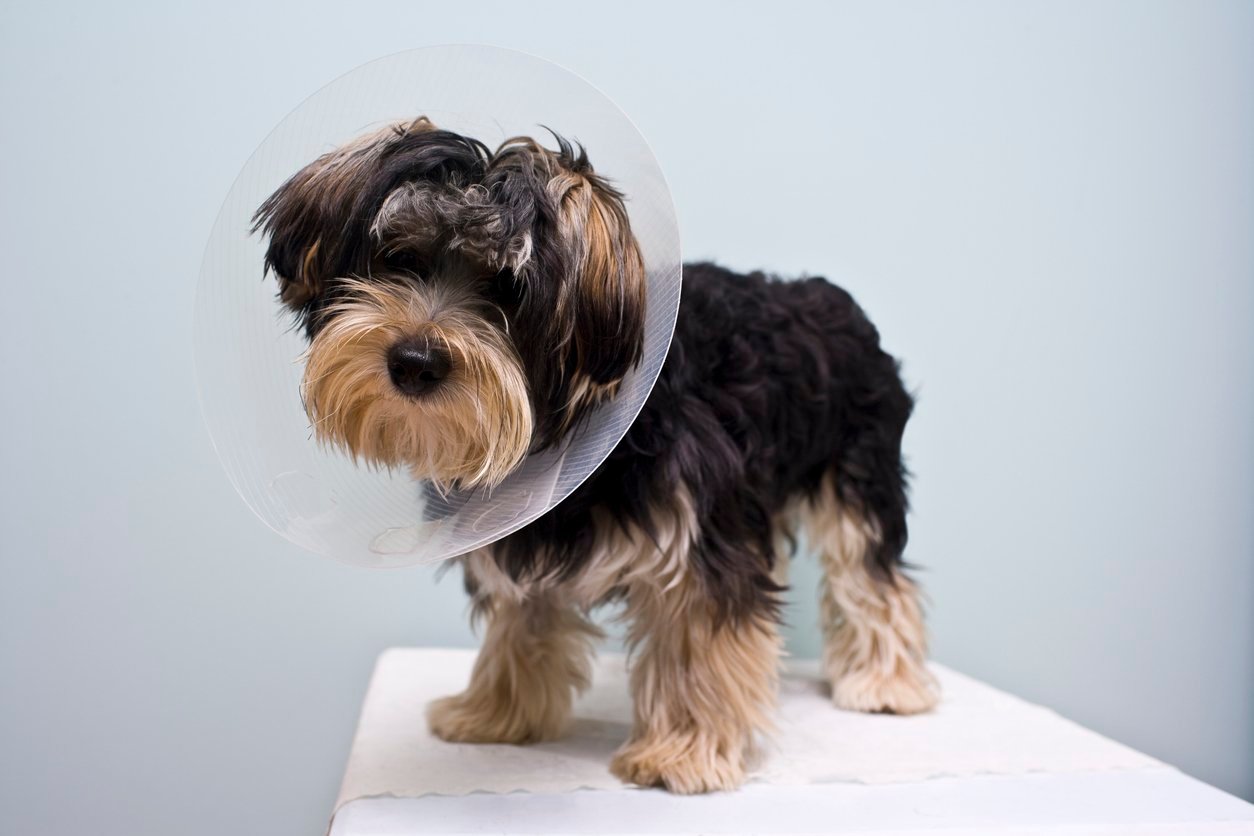
If you’re thinking about spaying your small dog, you might be concerned about whether or not she will recover well.
Since laparoscopic procedures were first developed for dogs in the 1990s, studies have shown them to be less painful for smaller-breed dogs than traditional abdominal surgeries that require cutting through dog muscles or ligaments (which is necessary when performing an ovariohysterectomy). A laparoscopic spay may reduce small dog spay recovery time—and thus help prevent other health problems—but your veterinarian must do thorough testing before making any decisions regarding surgery types.
Duration
In general, smaller dogs recover faster after surgery than larger dogs because they don't require as much anesthesia and are easier to handle. You should still expect at least a 10-day period for small dog spay recovery.
Outcomes
Spay dog recovery tips for small breeds are the same as larger ones: restrict activity for at least two weeks, and monitor the incision site for signs of infection or dehiscence. You may also want to consider changing to a raw food diet for dogs or a calorie-reduced diet as dogs’ metabolisms tend to slow down after being spayed or neutered due to a reduced basal metabolic rate.
Advice
In general, your dog’s size shouldn't factor into whether or not you get her spayed! The only thing that matters is what would make your pet happy (and healthy).
Tips for Dog Spay Recovery
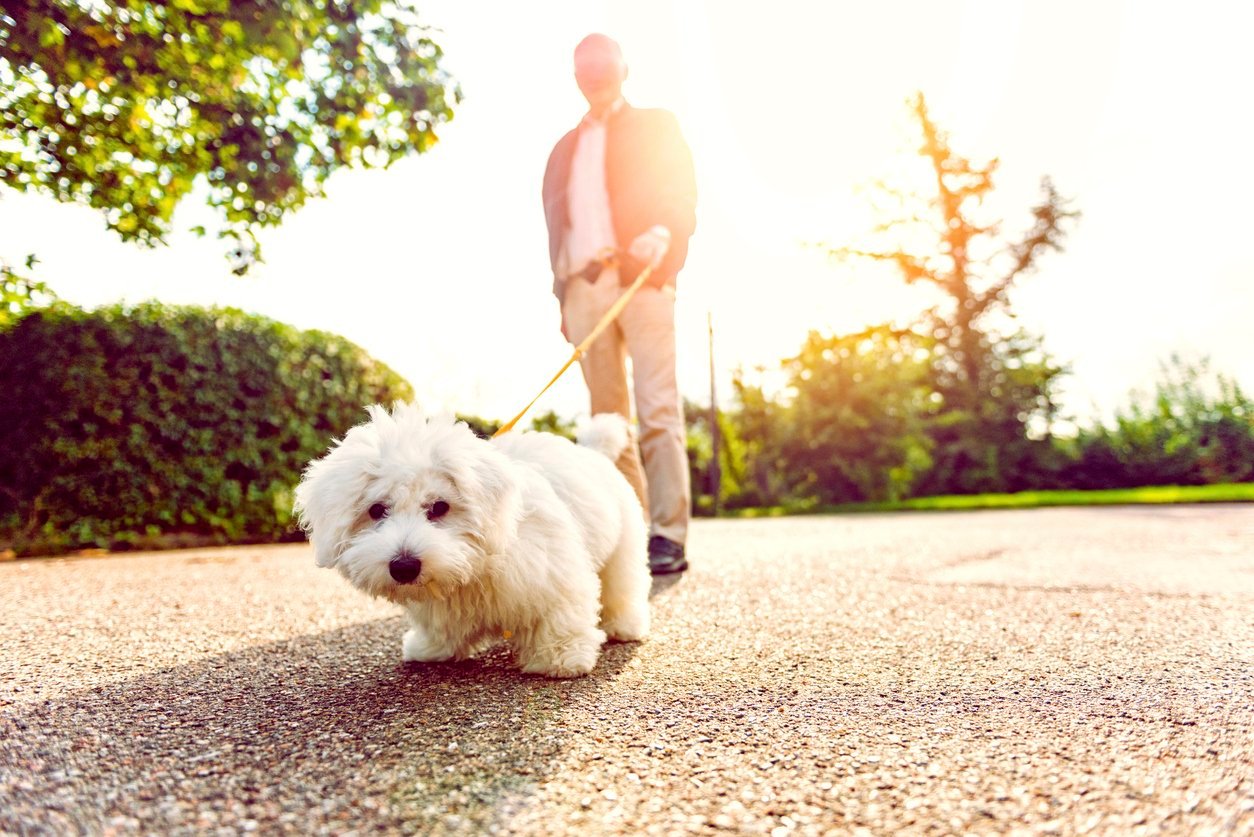
Of course, you want your dog spay recovery to be as successful as possible!
So what is a pet pawrent to do?
Well, you can start by ensuring that your vet’s instructions are followed thoroughly! After all, they know the procedure they completed on your pet best and may have specific instructions depending on your dog’s age, size, breed, and home.
In general, though, there are things you can do to make sure your dog spay recovery goes smoothly.
Some of our top tips for dog spay recovery are outlined in the table below.
|
Tips for Dog Spay Recovery |
Description |
|
Keep Your Dog Calm and Quiet |
Getting excited can lead to breaking stitches open – and that is no fun for your pup! Keeping your dog away from front doors and other noise or visual triggers and skipping wild play times with the kids for a few weeks is advisable. |
|
Keep Your Dog Warm and Comfortable |
Gas anesthetics can lower your pet's body temperature, so keep them warm. Keeping them warm will also help them recover more quickly from the anesthetic. |
|
Keep Your Dog on a Leash |
Leashing your dog with a short lead is best when recovering from spay surgery. That way, you can keep them close and avoid running, jumping, and other activities leading to the sutures breaking open. |
|
Keep Your Incision Clean and Dry |
Skip swimming and baths immediately following surgery, and make sure to clean the incision daily with the correct supplies as directed by your vet. This avoids infection. |
|
Keep Your Dog Away From Other Dogs |
You don’t want stitches to break open (most likely between days 3 and 5) even if your pup seems like she’s on the mend, so keep your dog crated and resting most of the day, especially if you have other dogs in your home. On walks, be careful to avoid excited neighboring pups, and if you find it hard to keep your pet calm around other dogs, aim to walk them in your own yard for at least the first few days after dog spay recovery has begun. |
|
Keep Your Dog Away From Children |
Children love their pets – but when you are dealing with dog spay recovery, small children especially should be kept at a distance from dogs to prevent both child and dog from getting hurt. Dogs may not act themselves in recovery, so keep children away from their sore spots and make sure everyone in the home knows it’s important to stay calm and quiet when around your dog in spay recovery. |
Dog Spay Recovery Complications & Solutions
No one wants to see their dog face complications from surgery, but it is something you should be aware of and be prepared to handle should it arise. Plus, plenty of these complications can be seen as preventable, which is great news for pupared owners like you doing your research.
We’re going to cover 3 of the most common complications faced in dog spay recovery and their solutions. That way, you know what to expect post-op!
Complication & Solution #1
Complication: Infection
Solution: Good wound care
Infection can happen to us and our animal counterparts, especially after surgery. Moisture, dirt, and bacteria can irritate and inflame your pup’s incision and create more pain and discomfort for them.
Symptoms of a poorly healing incision in dog spay recovery include:
- Dripping or continuous drainage of fluid
- Bad odor
- Discharge of yellow fluid
- Extreme swelling or pain
- Gaps around the incision
- Bleeding excessively
Call your veterinarian for advice or to schedule an appointment if you notice any of these symptoms. Call your vet even if you’re concerned about your pet’s incision healing. There’s no harm in being cautious.
Speaking of being cautious, it’s also so important to follow proper wound care practices, as directed by your vet, to avoid infection in the first place.
This may include cleaning the wound, inspecting it, and modifying your dog’s daily schedule to avoid infection. For instance, regardless of whether your pet usually lives outside, it is very important to keep her indoors for the next ten days (except to go to the bathroom) to prevent infection and allow her to heal properly.
By making these small changes, you can avoid a painful infection!
Complication & Solution #2
Complication: Reopening wounds and breaking stitches
Solution: Play it safe
You’ve likely heard the phrase, “better safe than sorry”, before. That applies to dogs recovering from spay surgery. Keeping it calm, cool, and collected is key. Getting excited and jumping up can lead to your dog breaking their stitches open.
When stitches reopen, your poor pup is at risk for infection and other uncomfortable experiences.
Here are a few situations where dog spay recovery stitches may reopen, and how to avoid them:
| The Situation | How to Prevent Reopening Stitches |
| After surgery, your dog’s wound may get itchy, so she may try to lick it or chew on it. A dog’s saliva is not antibacterial, nor can it speed up wound healing. Dogs can remove their stitches, reopen their wounds, or introduce infection within minutes of licking or chewing. This can delay healing considerably and means another trip to the vet. | In order to prevent the dog from licking the stitches, use an Elizabethan (“E”) collar. If your dog wears the collar even while sleeping, they won’t be tempted to bite their stitches |
| Making sure your dog isn’t overly active after surgery helps prevent wounds from reopening. Especially if the play is rough, stitches can come out during what seems like a fun game. | It’s critical for your pet to avoid jumping, running, climbing up on furniture (including beds and sofas) and going up or downstairs for a long time following the procedure. |
| It’s normal to vomit once or twice the night after surgery, but your pet may repeatedly vomit, causing stitches to come out. Though post-anesthesia vomiting is the most common complication, a vet must be contacted if your pet vomits multiple times or if the vomiting lasts all day. | Start with a tiny bit (1/8 cup) of your pet’s regular food. Give her a little bit of water or ice. You can offer them another small meal and drink if they keep it down for an hour. Don’t let your pet gobble unlimited food or water – this can upset their stomach and cause vomiting. A dog bland diet may help combat nausea and vomiting, too. |
If your dog's stitches do come out, there is nothing you can do from home. Whenever a suture is pulled out, the risk of bleeding, infection, and painful scarring increases. Let your vet know you're coming in for an emergency visit. An issue like a ruptured suture gets immediate attention, and the vet can at least be ready when you arrive.
Something else that can help speed up the process of your dog spay recovery? Adding dog joint supplements to their recovery plan.
Ingredients that help the dog spay recovery timeline speed up and reduce pain and inflammation for your dog include:
- Glucosamine for dogs
- MSM
- Chondroitin
Looking for a pet supplement like TRI-ACTA for pets that has 100% active ingredients, including the ones we listed above is key to more effective treatment, and will help your furball get back to their old selves a little bit faster, with fewer complications along the way.
Complication & Solution #3
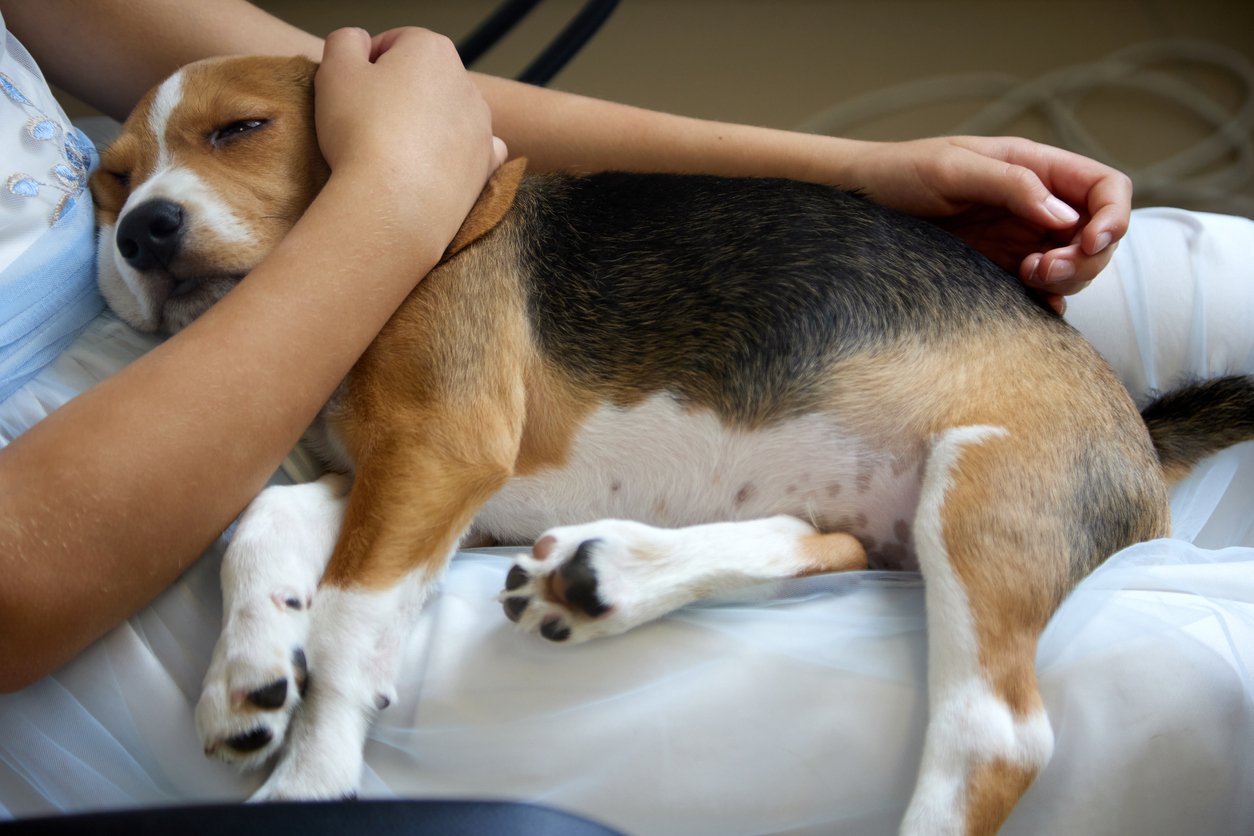
Complication: Pain and inflammation
Solution: Medication and supplements
While your dog will be unconscious and feel no pain during the surgical procedure, it will need pain medication to help with the dog spay recovery process. Injections of pain medication will be administered to your dog by your veterinarian following the surgery. These injections should last between 12 and 24 hours.
Then, your veterinarian will prescribe any take-home medication necessary to help relieve your dog’s post-operative pain.
Dog spay recovery medications prescribed by vets include
- Carprofen
- Rimadyl
- Torbugesic
When giving your dog pain medications, follow your veterinarian’s instructions carefully. Dogs should never be given human pain medications because dogs cannot tolerate many human pain medications.
Dogs can’t take pain medications for more than a few days or weeks, and not all dogs respond well to a prescription NSAID.
So what is a pet parent to do?
You can try an extra-strength joint supplement like TRI-ACTA H.A. for pets. This supplement contains all the joint health and soft tissue supporting ingredients of our regular strength product but also includes hyaluronic acid. This ingredient not only helps make shinier coats and promotes healthy skin but also improves synovial fluid quality. All of this contributes to a faster recovery for your sweet pup and some inflammation and pain relief along the way.
TRI-ACTA H.A. for Pets
Our maximum strength formula is optimally designed to accelerate the formation of cartilage, minimize inflammation, expedite the healing process, and improve joint conditions.
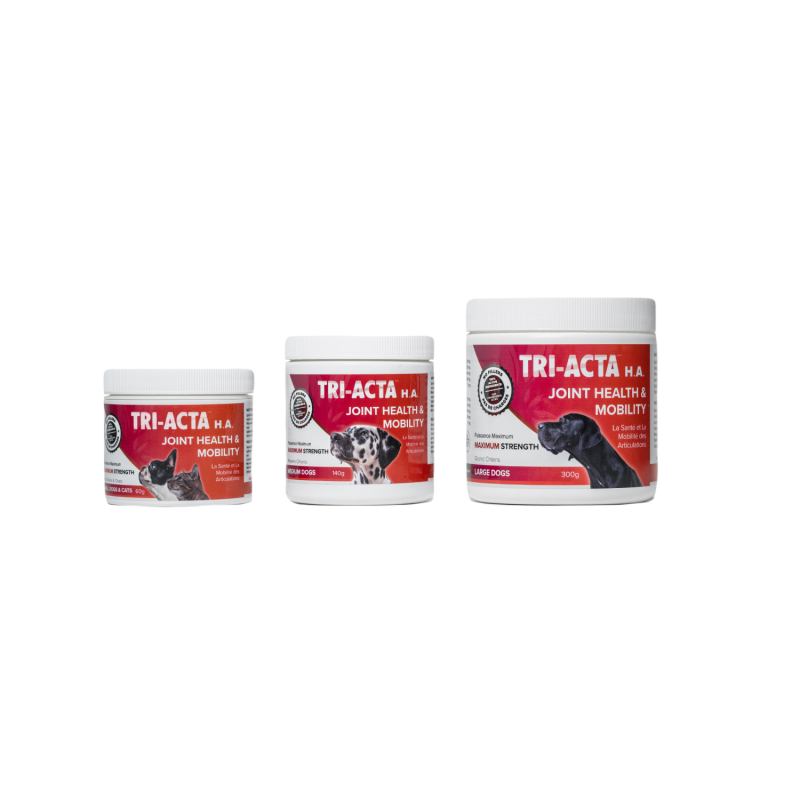
TRI-ACTA offers you and your pet in dog spay recovery:
- Low per-serving cost
- Health Canada approved Veterinary Health Product (VHP) designation
- Contains 100% active ingredients and no fillers
- Therapeutic dosage
- Serving size is small and easily accepted by pets
Q&A
Still have a few questions about dog spay recovery? We’ll answer some more frequently asked questions about this surgery and recovery so you feel good about caring for your sweet pupper!
What is the average dog spay recovery time?
Dog spay recovery time will vary depending on your dog’s age, weight, and overall pet health. It can take 10 to 14 days for your dog to get back up on its feet after undergoing surgery. It depends on the dog, and your veterinarian can give you more specific tips for her unique needs.
However, if your veterinarian recommends additional rest or pain medication for your pup during this time, it may take longer than expected before they are fully recovered.
How Can You Avoid Complications During Dog Spay Recovery?
Ensure that you follow all instructions from the vet when caring for your pet after surgery – this includes not allowing them off leash until they have completely recovered from anesthesia.
You should also aim to do the following in dog spay recovery:
- Keep wounds clean
- Feed them only specific foods as directed by their nutritionist
- Give them plenty of water throughout the day (or at least every two hours)
- Provide lots of love and affection
- Keep track of whether or not any signs indicate something has gone wrong with their healing process – such as excessive bleeding or swelling around incision areas.
You should also note that some complications might occur even if everything was done properly during surgery, so it’s important not to panic when something unusual happens (your vet will help determine whether or not these issues need further treatment).
Conclusion
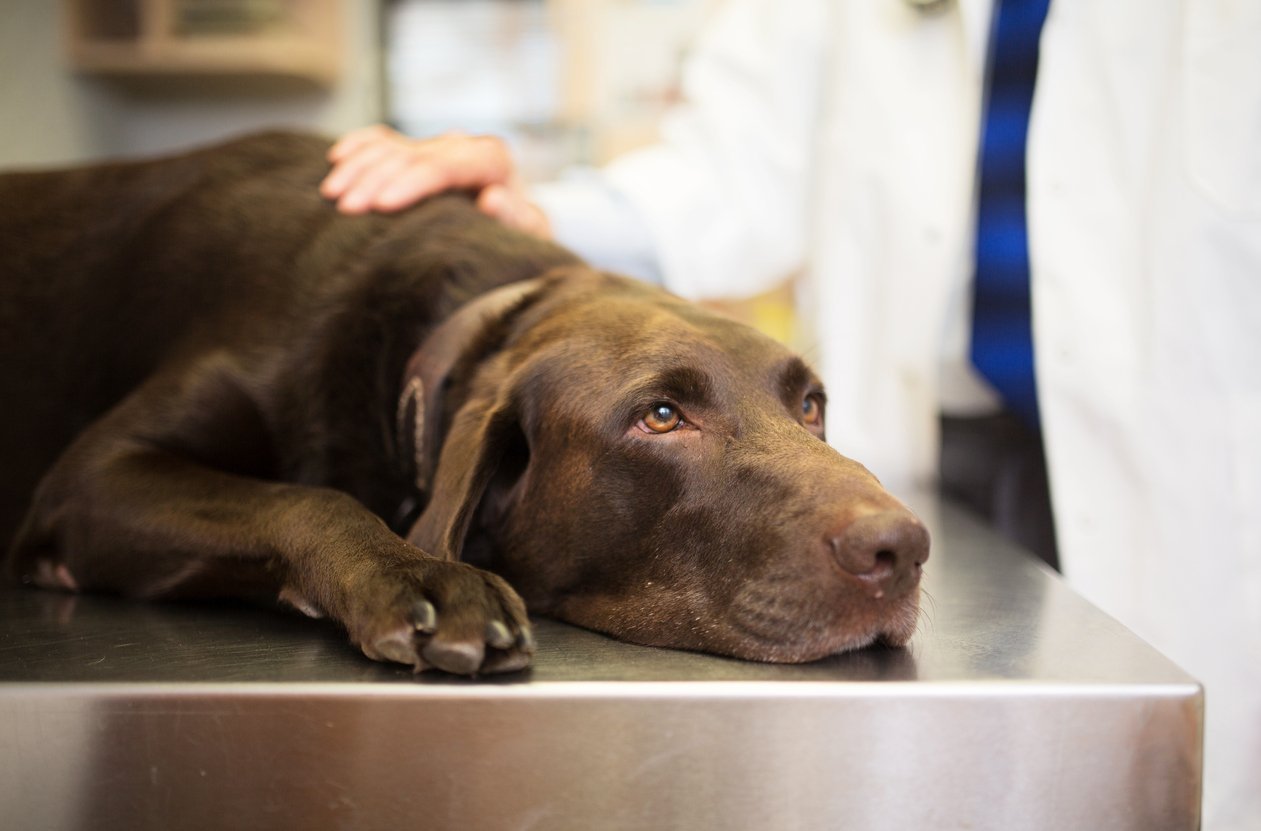
From caring for wounds appropriately to avoiding reopening wounds, you know that caring for your pup in dog spay recovery is essential to avoid complications. You also know you need to complement their recovery with a dog supplement like TRI-ACTA for pets – a wholesome, high-efficacy dog supplement that helps your dog spay recovery go more smoothly.
TRI-ACTA H.A. for Pets
Our maximum strength formula is optimally designed to accelerate the formation of cartilage, minimize inflammation, expedite the healing process, and improve joint conditions.

In conclusion, we hope this article has helped you understand the importance of dog spaying and the procedure itself. If you have questions regarding TRI-ACTA for pets, don’t hesitate to contact us for advice or support.

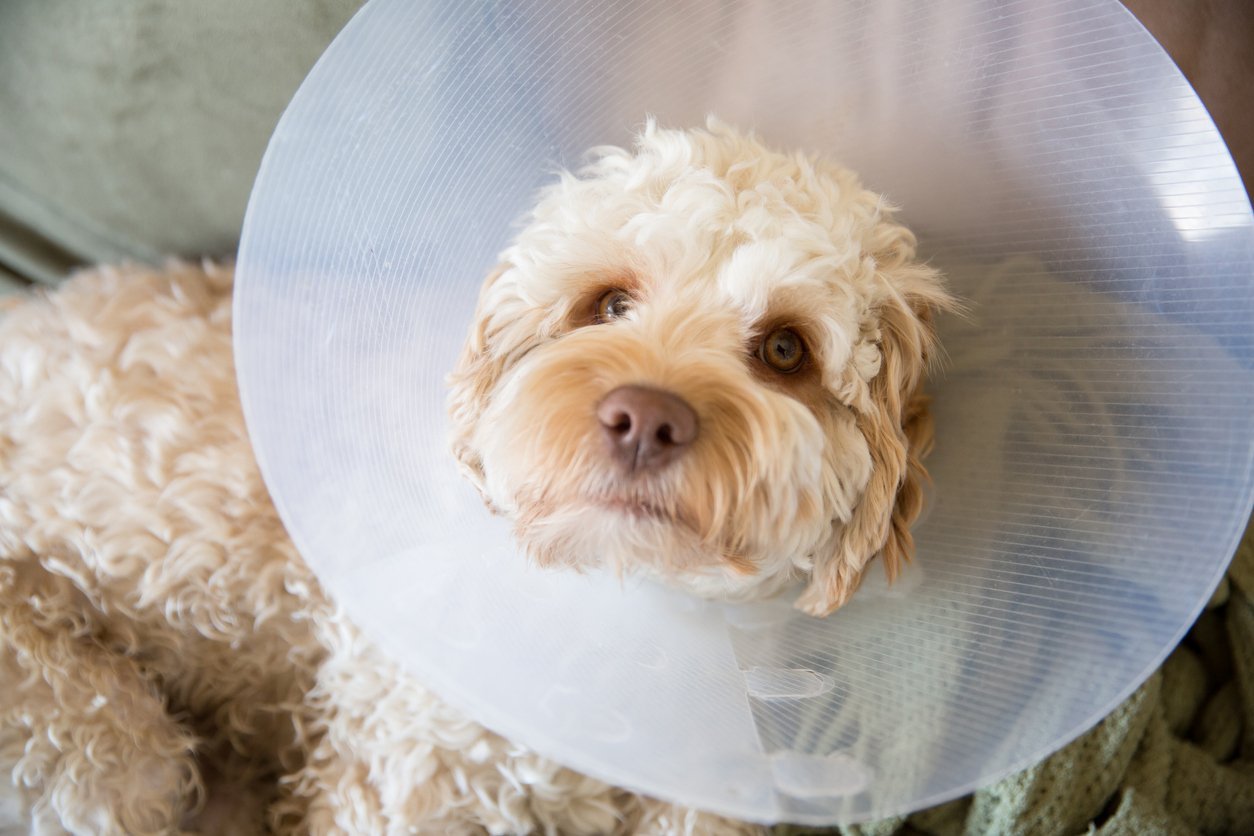

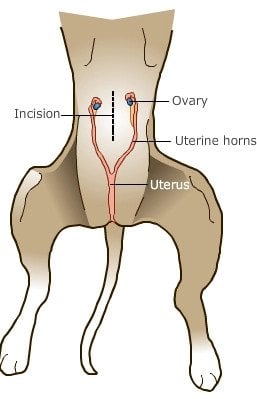






.jpg?height=2000&name=Cliick_Integricare-DISPLAY-REVISEDV2%20(1).jpg)

